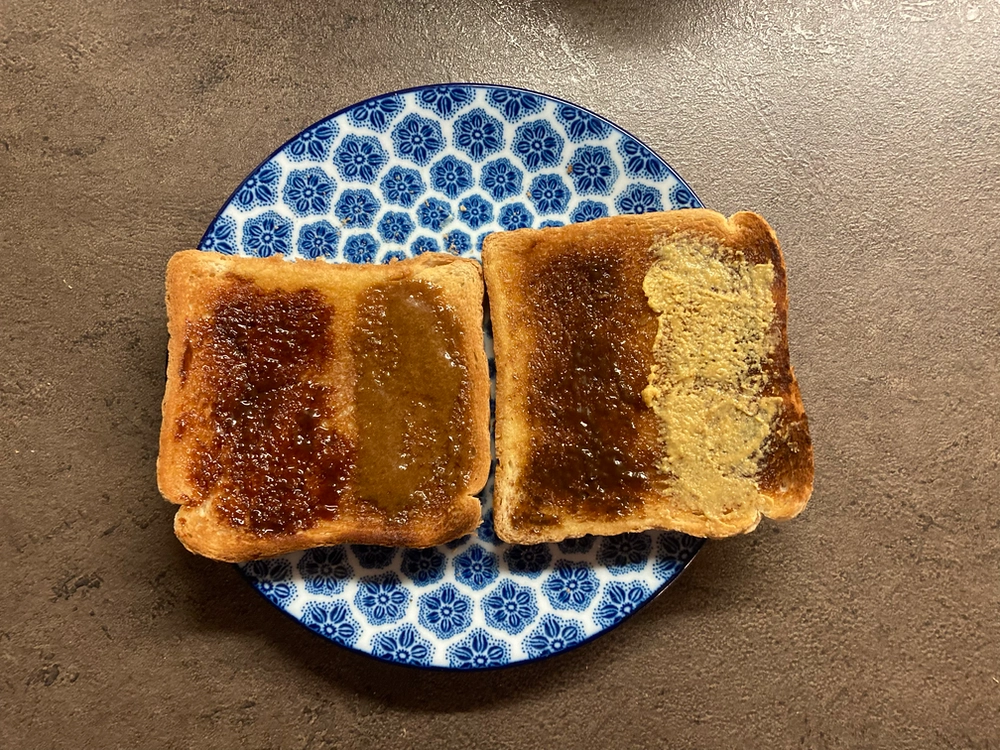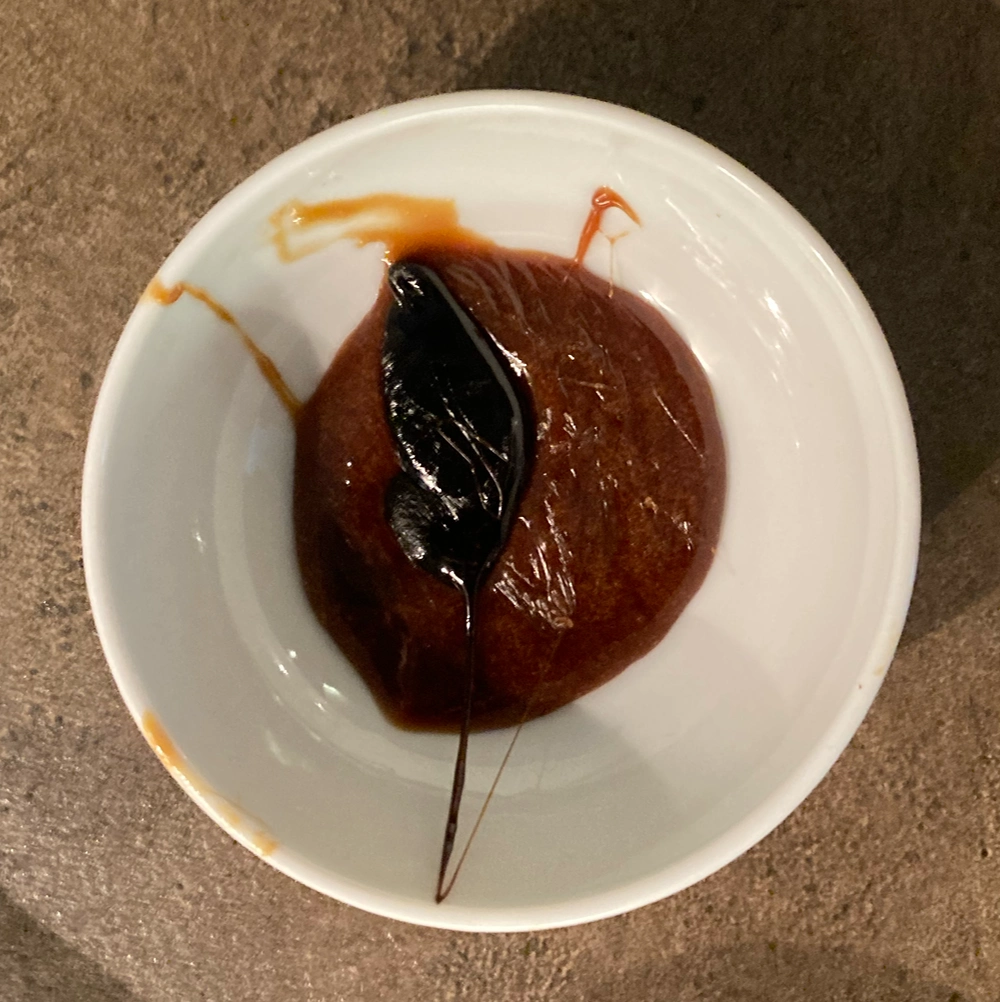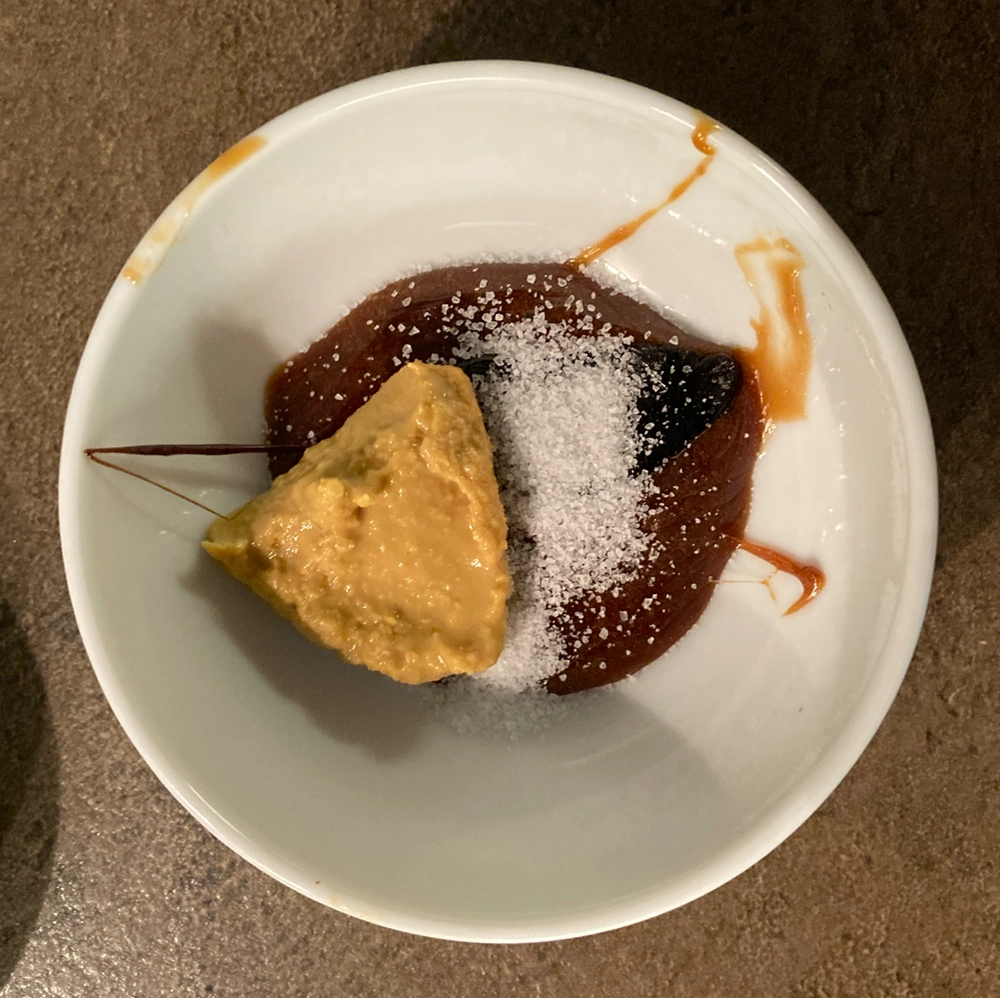Adventures Making Vegemite
To non-Australians, Vegemite is one of the strangest food products you’re likely to ever encounter. It’s a dark brown, almost black, shiny paste with a pungent scent, and a very strong, almost indescribable taste that is strongly umami and very salty.

It is a little like soy sauce in solid form.
We tend to eat it on toast for breakfast. The trick is not to spread it thickly like peanut butter; instead, you take about a quarter of a teaspoon’s worth and scrape it thinly over the entire slice. It also goes very nicely in a toasted cheese sandwich.
It sounds unique, but perhaps the strangest thing about it is that it is not: the British have Marmite, which tastes similar but is runnier, Australians have a second yeast extract spread called Promite, In my personal opinion, even better than Vegemite. the Germans and Swiss have Cenovits and Vitam-R, I haven’t tried either of these. and a Latvian friend once gave me a jar of a tan-coloured, honey-consistency thick liquid he told me was like Vegemite and I (sadly) found inedible.
This leads to spirited debates about which is best and, like a true Australian, I mock Marmite to the British friend with whom I made Vegemite for this article, Marmite is the inferior product: it is not a solid paste but is runny, and has a slightly less strong taste. even as he keeps Marmite in his cupboard and would never touch Vegemite. Both of us quietly admit they’re very similar and I have many times bought Marmite when Vegemite was not available. When you live overseas, you make do with what you can get. In Australia, you’d never admit to eating Marmite. But among fraternity of overseas Aussie citizens, there’s an unspoken knowledge that we’ve all lowered ourselves to Marmite from time to time.
But even if thick black pungent salted umami spreads are common, how are they made? And what is such a strange spread really made of?
The jar claims to be a ‘yeast extract’, and Aussie rumour had it that it was made from leftovers from making beer. Very Australian. Since it was invented in the 1920s, I personally had a mental image of a specific strain of yeast fermenting to produce some precursor substance, Asimov-style.
Then my Marmite-loving British friend sent me this video, From the How To Cook That Youtube channel by Ann Reardon. and one afternoon we made it. By ‘we made it’, it’s more that I’d casually mentioned I’d like to try, and then at the pub the previous evening he said he had all the ingredients and would I like to join him the next afternoon? In other words: his effort, his ingredients, his kitchen, and I took photos.
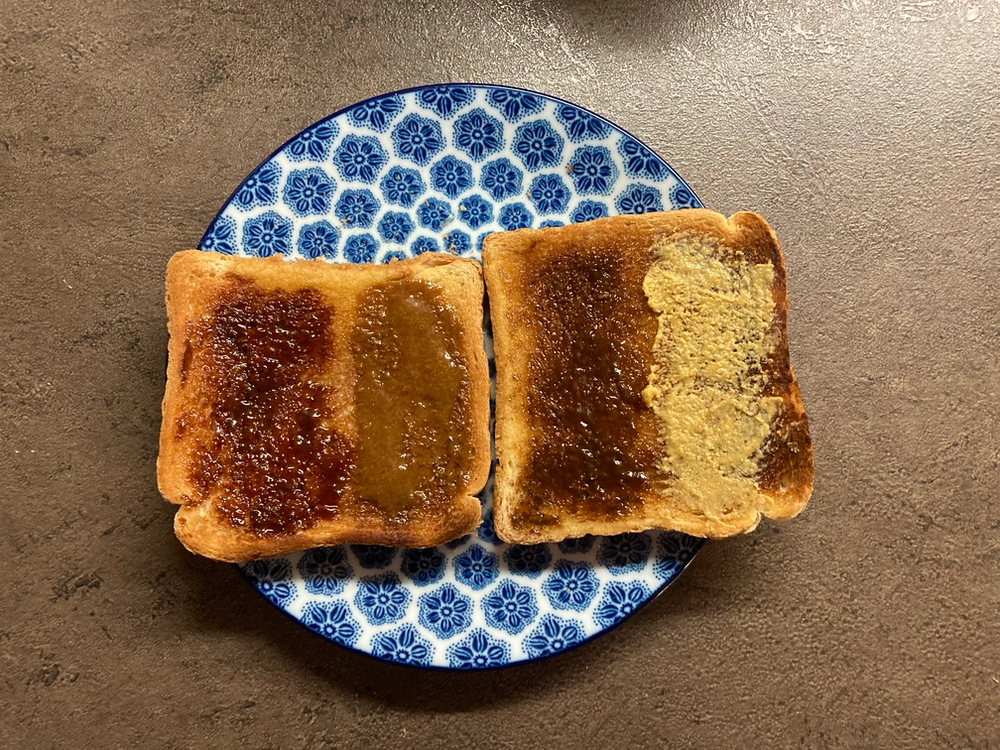
Ingredients
A homebrewing friend provided:
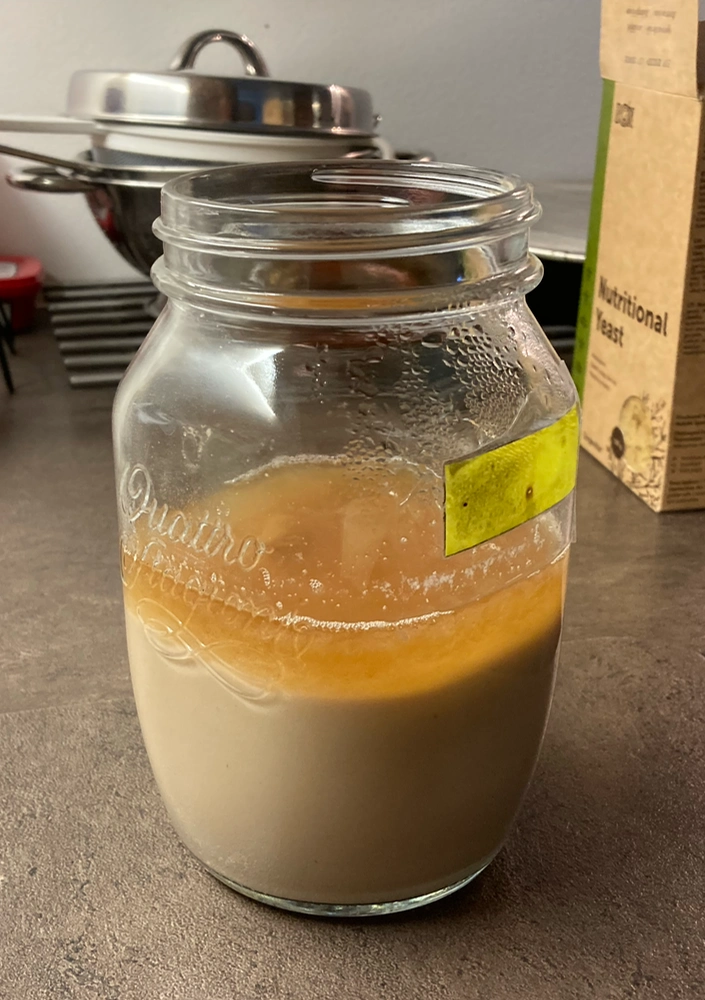
- The yeast slurry from the bottom of a batch of beer (from a plain lager)
- A fermented malt wort made from dry malt mixed with water
The malt was very liquid and we boiled it down to a thick syrup. You could likely use supermarket malt.
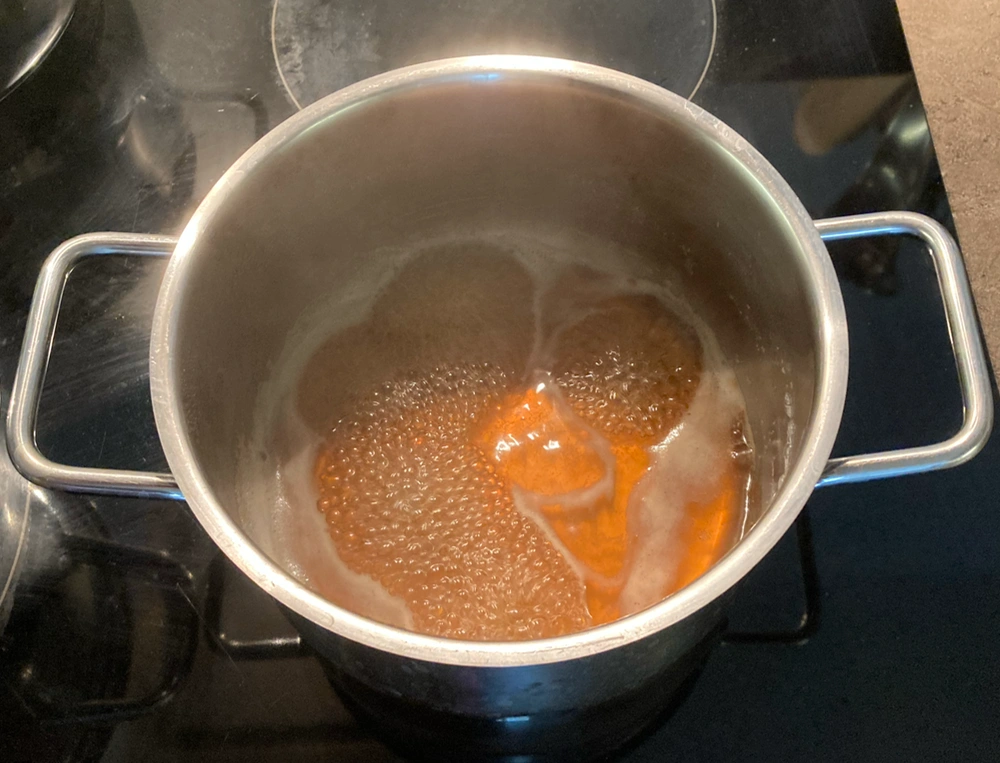
The yeast slurry in Ann Reardon’s video was separated into yeast and liquids via a home-made washing-machine centrifuge. But our slurry had been sitting in my friend’s fridge for a few days, and he simply poured off the top. This liquid, a pale clear tan, we boiled down into a thick, dark brown syrup too. Initially, the kitchen smelled like hot beer, but it soon changed to smell like something recognisable as a Vegemite-like scent. It was not unpleasant—if you like Vegemite—but it was strong, and at some point despite the winter outside every window in the apartment was opened.
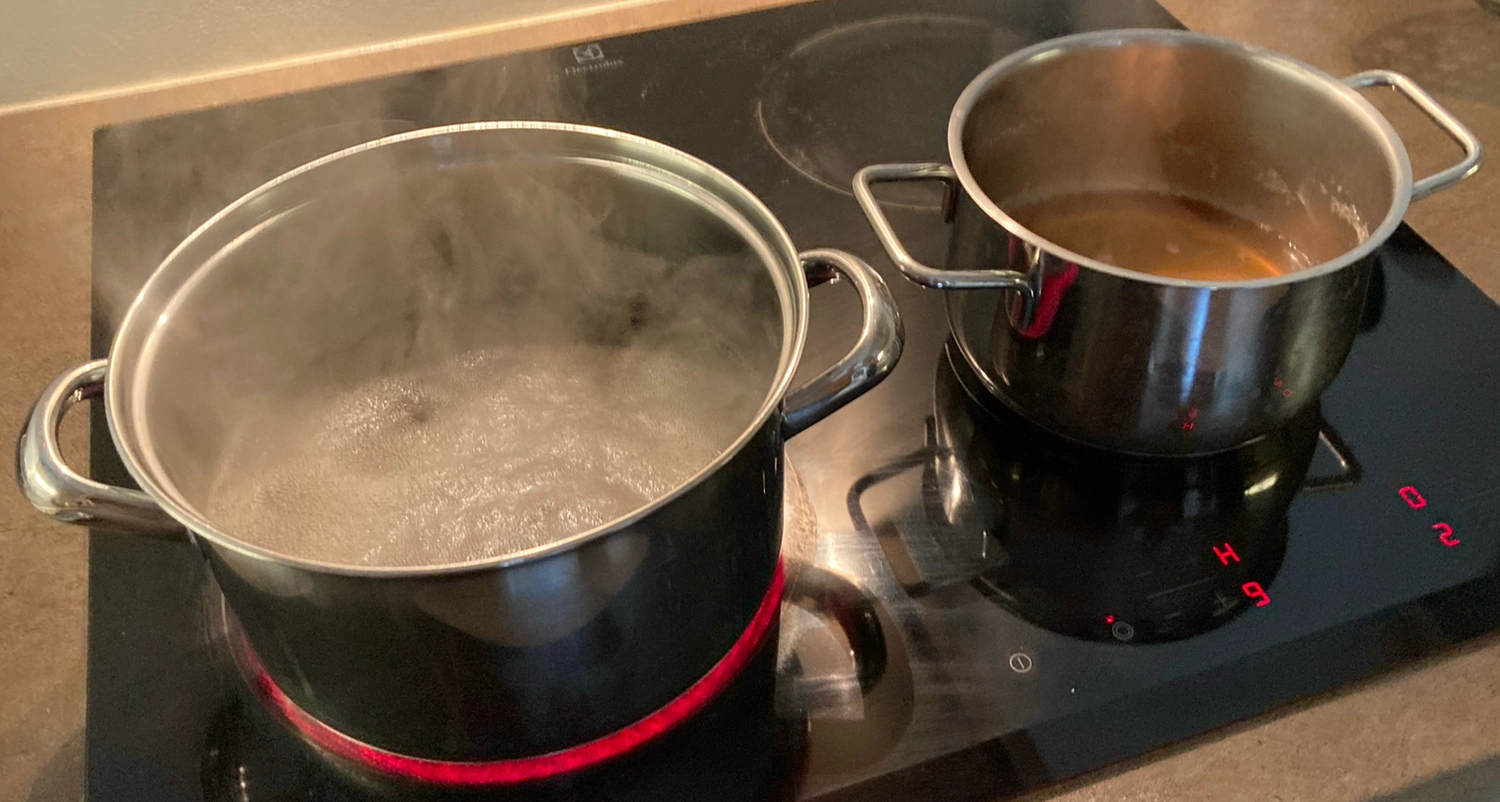
A good half-liter or more of yeast-slurry-liquid turned into only a couple of tablespoons of dense brown syrup. This is definitely a recipe where large starting volumes are needed, and you won’t get a large quantity result.
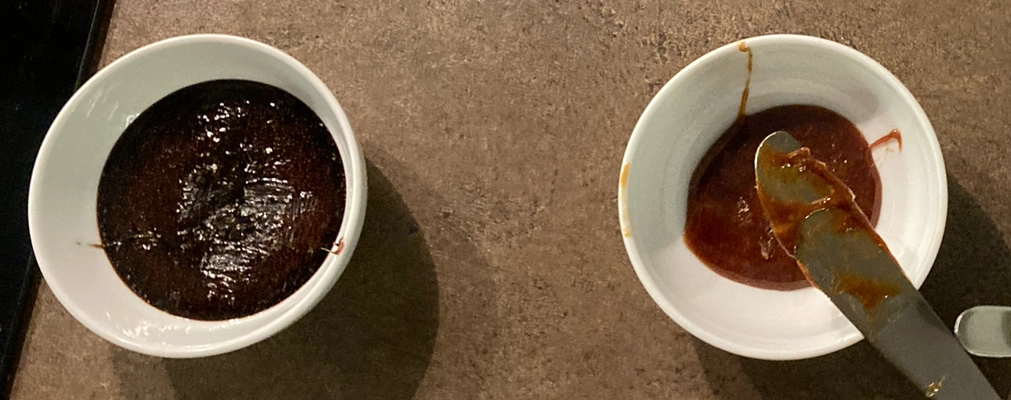
A good cooking blog would show these two dishes very clean, with no drip remnants, but all this stuff is thick, sticky, and messy.
The final major ingredient is nutritional yeast. We mixed several tablespoons with warm water to make a light yellow sludge. The names for the ingredients—slurries, sludges—are as appetizing as many non-Australians claim Vegemite to be.
Taste Testing
A taste test gave:
- Boiled slurry liquid: Vegemite or Marmite overtones, but surprisingly bitter (perhaps the result of hops?)
- Boiled, thick malt: unexpectedly, a strong ‘this taste is not Vegemite but is in Vegemite’ response. Vegemite does not taste like malt, and you would never eat Vegemite and think of malt, yet boiled-down malt wort syrup distinctly resembles very sweet Vegemite.
Mixing
The Youtube video has no proportions, and even with large quantities of starting liquids we had only teaspoons of boiled-down results. Taking the entire boiled-down yeast slurry runoff liquid, perhaps three teaspoons or a little more, we added about half a teaspoon of malt, a generous dash of salt Vegemite is very salty. and about a teaspoon of nutritional yeast sludge. Some vigorous mixing, some adjustment (a tiny bit more malt, plus a bit more salt) Vegemite is very salty. and we deemed it done.
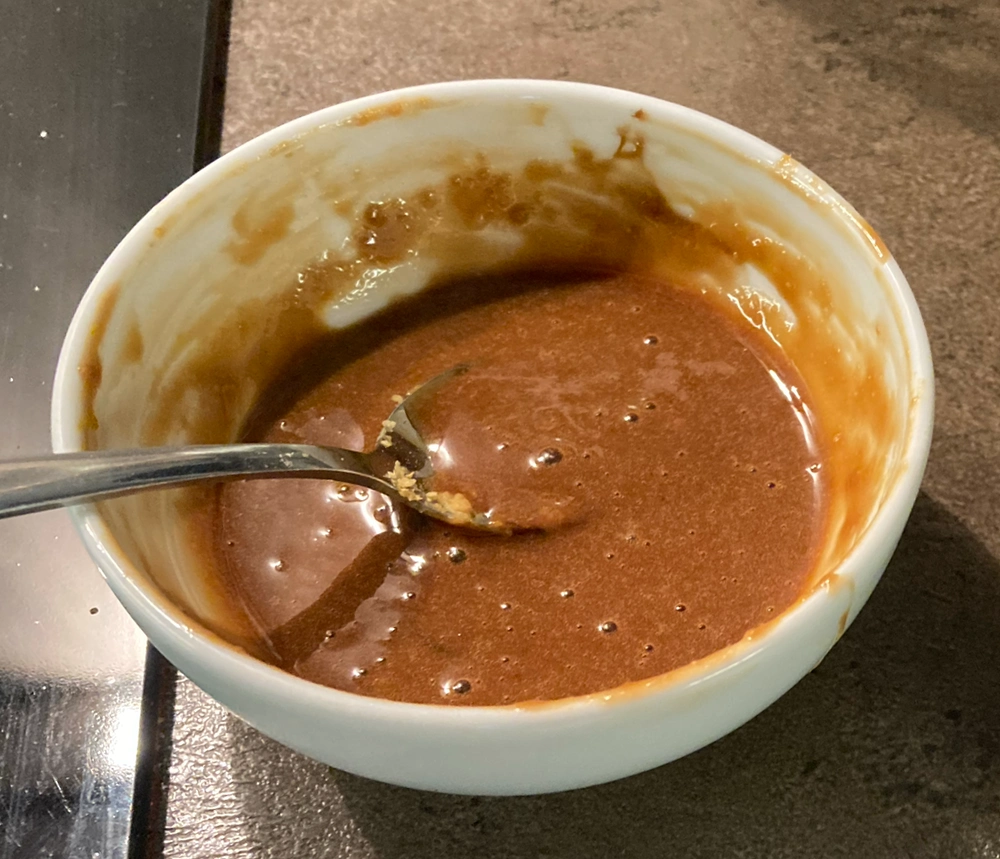
It was not the right colour. Nor did it taste exactly like Vegemite, though it was very close. But the taste was exactly like Marmite!
Taste Tests
British friend:
Bang on. Yeah. Feels like you should make it with beer that’s not very hoppy.
Friend’s partner:
Really really close. A little more bitter maybe.
My wife:
It’s softer, and more bitter, than Marmite. Marmite is very sticky, and this lacks the stickiness of Marmite. But it still tastes like Marmite.
To me: There was a strong hit of salt and then it fades into distinct Marmite flavour. Then a slight unwanted bitter note. The aftertaste is just like Vegemite. The next day, cold from the fridge, it seemed more sharp in flavour than the previous day. Overall, very in the Vegemite/Marmite family.
Variations
In the same taste-test, we also tried a variant made by our Czech friend who supplied the beer slurry. He was not interested in recreating Vegemite per se, but in creating an umami stock he could use for cooking. So he’d boiled it down with stock cubes and a lot more malt: the colour was right (very dark due to the malt) but it was sweet and very much not Vegemite.
For ours, the main consensus is that there is a hint more bitterness in our Mite than in Vegemite. This may be due to the beer that provided the slurry: it came from a well-hopped lager. Perhaps we need to add more malt to offset the bitterness; it’s a strong flavour though and risks overpowering the key Vegemite notes that come from the boiled-down beer slurry. I’d like to try again using slurry from making a stout or one of the sweeter porters, which may have fewer hops, a darker colour from the roasted grains, and could give a less bitter starting point.
The majority of Australian beer is lager, and if Vegemite uses the most widely available beer remnants, it likely comes from some kind of light, hopped beer. I am curious how they get such a dark colour.
Finally, Wikipedia claims Vegemite is made with celery and onion extracts. I’d like to try again using a stout/sweet porter as basis, and add celery salt and onion powder.
Making Vegemite
What did I get for an afternoon’s worth of watching beery liquids boil down in my friend’s kitchen? I came home with three quarters of a teaspoon of brown runny goop… and somewhat of a fascination for how people invented this stuff in the first place.
